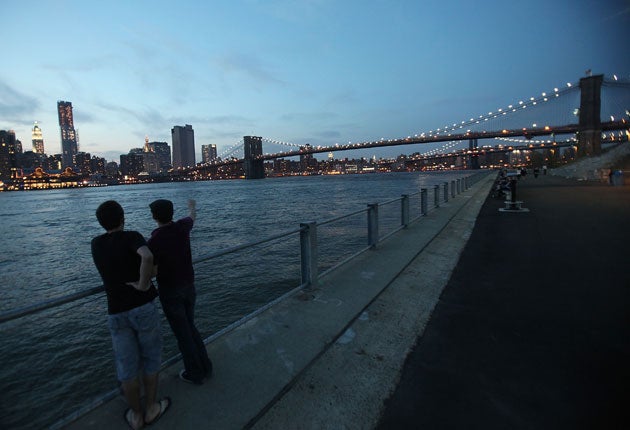Are tourist corridors in the Caribbean applicable to British tourists?
Simon Calder answers your questions on tourist corridors, Hull’s role in the government’s northern rail plan and booking flights to the US


Q We are going to Negril in Jamaica over Christmas. I have read about “tourist corridors” on the Jamaican government website. I'm a little confused as to what restrictions (if any) are in place for tourists visiting the island as the message is rather contradictory. Any thoughts or advice would be much appreciated.
Devans
A Jamaica does not understate its claims to be able to offer a good holiday during the coronavirus pandemic. Visit Jamaica says the island’s “new normal for travel delivers an authentic, relaxing and Covid-secure travel experience”.
It continues: “We have paired a comprehensive destination-wide approach with a laser-like focus, committed to providing the highest levels of health for visitors, tourism workers and local communities.”
So what does that mean for tourists like you? Well, the government has created “resilient corridors” that it claims “encompass the majority of the island’s tourism regions” – basically resorts along the northern and southern coasts. The idea is that you can carry on much as normal, though leaving you accommodation comes with strict conditions attached.
The government explains: “Under this measure, persons are required to remain at their hotel/resort within the corridor for the duration of their stay.
“They may, however, leave the hotel/resort to visit a restaurant, duty free shopping mall, craft market or tourist attraction that is certified by the Jamaica Tourist Board to be a Covid-19 Resilient licensed tourist attraction located within the resilient corridor.
“All travel to and from the attraction must be on transportation licensed under the Tourist Board Act.”
But that position appears to be relaxing: on Thursday the prime minister said that fully vaccinated people who take a PCR test in advance (rather than the lateral flow that is standard for entry to Jamaica) will be able to enter the country without quarantine or further tests. So, by Christmas, I predict things will be fairly normal in all the usual holiday areas – and Jamaica may once again be excellent backpacking territory.

Q You have been covering the government’s integrated rail plan for the Midlands and north. But so far no one has mentioned Hull. What can we look forward to?
Name supplied
A The fine city of Hull has a beautiful station, part of the Paragon Interchange, but is at the end of the line in many respects. Going back to the start of the century, there was just one direct train a day to and from London. Thanks to Hull Trains, the first and only dedicated inter-city link, for the past 21 years there have been pretty good and reliable services connecting the Humber with the capital.
But links with the north of England remain tenuous at best. The hourly link from Hull via Leeds to Manchester takes more than two hours to complete a journey of 94 miles, which would be faster by car.
What the people of Hull may have been looking forward to, as promised in the 2019 Conservative manifesto, is improved rail links. Voters were told: “We will build Northern Powerhouse Rail between Leeds and Manchester and then focus on Liverpool, Tees Valley, Hull, Sheffield and Newcastle.“
Unfortunately, the integrated rail plan (IRP) revealed that the proposed Northern Powerhouse Rail involves only a 40-mile stretch of new line that will connect Warrington in Cheshire with Manchester and Marsden, a small station 19 miles northeast of Manchester. At this point, the fast trains will rejoin the conventional, crowded rail line across the Pennines.
There is likely to be only a marginal improvement in journey times, with electrification promised only from Liverpool to Manchester to Leeds to York. On page 100 I found a glimmer of hope: “Any future development work on routes to Hull should focus on electrification and line speed improvements to improve journey times from Hull to Leeds.”
But also there is caution: “We are committed to delivering core IRP schemes on time, and to budget. Any future development of further schemes (such as further electrification to Hull) will depend on this; and on how demand and economic growth recover.”
So if things don’t go according to plan, electric trains may not be arriving at Hull any time soon – meaning slower, noisier and more damaging diesels will keep running for at least another couple of decades (unless, technology permitting, battery or hydrogen trains take over). Sorry I can’t be more optimistic.

Q Do you think capacity to the US will increase next summer? When would be a good time to book flights?
Christopher B
A Compared with the summers of 2020 and 2021, transatlantic flight capacity in the year ahead will undoubtedly grow. But according to the evidence I am seeing, there will still be fewer seats between the UK and US than before the coronavirus pandemic.
The first snapshot I am studying is the latest Eurocontrol report on long-haul aviation from Europe for the current week, compared with the same one in 2019.
Across the north Atlantic, flights are lagging 29 per cent behind pre-Covid levels.
Even though the US has opened up to British and other European travellers in the past 10 days, there is only a 1.5 per cent increase compared with two weeks ago.
Furthermore, those are flights, not seats. Dozens of high-capacity Boeing 747s previously flown across the Atlantic by Virgin Atlantic and British Airways have been scrapped or stored, with smaller aircraft replacing them.
BA and Virgin Atlantic are gradually building up their schedules, and United has announced more flights than ever between the UK and US. Even so, I predict continued suppression of demand – partly fuelled by traveller caution and concerns by companies not to waste money or put key staff at risk.
Another forecast, by the Economist Intelligence Unit, has just predicted: “Global international arrivals in 2022 will remain 30 per cent below 2019 levels.”
Whether fares rise significantly depends on how many buyers are in the market. Early signs are that reports of pent-up demand are justified. All other things being equal, I predict that points to a substantial rise, perhaps of the order of 30-40 per cent on the corresponding fares in 2019.
The airlines will be (reasonably) happy if overall capacity continues to stay low, because they can start to recoup some of their calamitous coronavirus losses. And with Norwegian withdrawing from the UK-US market, budget options are thin on the ground.
But knowing how airlines tend to behave, if revenue per seat remains high and sustained then extra flights are likely to be laid on.
So where does that leave you and me, deciding when to buy? My view is, if a deal looks good enough then I will commit – whether below £500 return for London-New York in April, or under £800 for a trip to Los Angeles in July. Otherwise, I will wait: knowing fares may rise still further, but hoping that would tempt airlines to lay on more flights to cash in.

Q As a first-time flyer I’m hoping you can point me in the right direction. With the US borders open again I’m hoping to visit friends in Mobile, Alabama. Where is the best place to look for flights and what should I be looking for?
Also I hear horror stories of bad turbulence over the Atlantic which is not helping my anxiety of being a first-time flyer.
Gary H
A A winter visit to Mobile, the Alabama city on the Gulf of Mexico coast, sounds excellent. Besides its naval history and impressive 1850 cathedral, it is also well located for exploring the beaches of Florida’s “Panhandle”, barely 30 miles to the east, and the Cajun culture of southern Louisiana to the west.
To book your flight, I recommend you involve a human travel agent (as opposed to the online variety) – either face to face or by phone to a long-established company such as Trailfinders or DialAFlight. It may cost a few more pounds than the cheapest the internet can offer, but you will get the benefit of professional advice, expert responses to your questions and help with other aspects of the trip, such as car rental.
Mobile has no direct flights from the UK. As a first-time flyer you may prefer not to take a connecting journey; a point-to-point journey will probably be quite sufficient for your maiden flight.
So I suggest you fly with British Airways from London Heathrow to New Orleans, the nearest airport to Mobile with nonstop links from the UK. Mobile is 130 miles (around two hours’ drive) from Louis Armstrong International Airport, outside New Orleans. If you are not travelling until January 2022, you may be able to take the train as Amtrak is planning to restore a New Orleans-Mobile connection from the new year.
In terms of turbulence: the clinical psychologist Dr Keith Stoll – who has worked with the British Airways’ Flying with Confidence course – says: “The main problem is that our brains can’t make sense of what’s going on during turbulence – and so we struggle with it until we learn it’s okay.”
If you let BA’s excellent cabin crew know about your concerns, they will happily keep an eye out for you on the flight. In my experience, though, turbulence is rare across the north Atlantic. Pilots are adept at choosing a course that offers smooth flying, and will work with one another to identify and avoid any areas that may give an uncomfortable flight.
Question via the latest Ask Me Anything at independent.co.uk/travel
Email your questions to s@hols.tv or tweet @simoncalder






Join our commenting forum
Join thought-provoking conversations, follow other Independent readers and see their replies
Comments